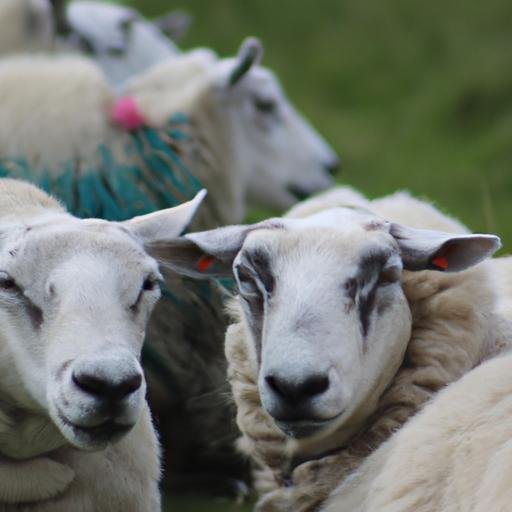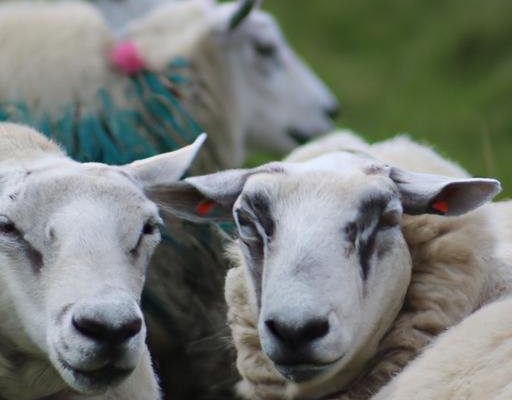
Let’s dive into the captivating world of sheep behavior. By the end, you’ll see these creatures in a whole new light. Whether you’re a farmer, a nature enthusiast, or just curious about the animal kingdom, understanding how sheep interact can be both enlightening and fun.
Sheep Social Structure: The Flock Mentality
Sheep are incredibly social animals, which is why they thrive best in groups known as flocks. You might think of a flock like a family unit where everyone looks out for one another. When sheep are in a group, they find comfort and security. If one sheep feels threatened, the others will often follow suit. This instinct is rooted in their survival; staying together provides safety from predators.
Interestingly, sheep can recognize other flock members and even remember their faces. They form strong bonds with familiar sheep, often preferring the company of those they know well. This behavior goes beyond mere companionship; it helps them maintain their social structure. You might even see them engaging in what looks like play—chasing or play-fighting. This is their way of establishing relationships and testing their rank within the group.
Some sheep may take on more dominant roles, while others are more submissive. This creates a hierarchy that helps maintain order in the flock. When integrated properly, most sheep will settle into a comfortable balance, reducing stress and increasing overall harmony.
Communication: The Language of Sheep
Sheep have a remarkable system of communication that includes vocalizations, body language, and even facial expressions. At first, you might think they only communicate through bleats, but it’s much more nuanced than that! For instance, a short, quick bleat could signal excitement or alertness, while a prolonged bleat might indicate distress or discomfort.
Body language is another essential aspect of how sheep talk to each other. You might notice some sheep stand tall and bold while others crouch low. This isn’t just random behavior; it signifies their confidence or submissiveness within the flock. When a sheep lowers its head while approaching another, it can be a display of dominance or curiosity, depending on the context. It’s fascinating to see how these creatures use their bodies to express feelings and intentions.
Let me explain—when you observe a flock grazing peacefully, they’re not just eating; they’re engaging in a social ritual. They’ll often stay close together, using their position in the group to show their status. It’s little things like this that reveal the depth of their communication.
Understanding Aggression and Conflict
Despite their friendly and gentle nature, sheep can also display aggression. This is usually linked to their social structure, particularly during the breeding season or when establishing hierarchy. You might see some sheep butting heads or engaging in minor scuffles. This is a natural way for them to assert dominance and establish order within their group.
But here’s the thing—these conflicts are often short-lived. Sheep have a unique ability to resolve disputes quickly, returning to their peaceful grazing soon after. This is thanks to their social bonding and strong sense of belonging. When they do engage in aggression, it typically serves a purpose, helping them to define their roles within the flock.
You might wonder how farmers handle these natural behaviors. Understanding the dynamics can help farmers manage their flocks effectively, ensuring that aggression doesn’t escalate into serious fighting that could hurt the animals or disrupt the group’s wellbeing.
Spacial Awareness: The Importance of Personal Space
When it comes to personal space, sheep have their own rules. They’re aware of their surroundings and understand when they’re too close to each other. If a sheep feels crowded, it might display signs of discomfort by moving away or showing agitation. In the wild, this instinct helps them avoid predators and maintain harmony within the group.
In a flock, you’ll often see sheep establishing a sort of bubble around themselves. This space can shift depending on the dynamics at play. For instance, a more dominant sheep may intrude on the space of others, which can lead to minor skirmishes. Knowing this, farmers need to ensure that their sheep have enough room to roam and that there’s a good balance in their interactions.
Having adequate space is essential not just for comfort but also for health. Stress can lead to health issues in sheep, so creating an environment where they can feel secure and relaxed is crucial.
The Role of Dominance: The Leader of the Pack
Every flock usually has a dominant sheep, often referred to as the “lead ewe.” This leader plays a critical role in guiding the group, especially when deciding where to graze or when to be on alert for danger. Interestingly, the lead ewe is often the most experienced sheep, displaying confidence and familiarity with the environment.
You might think of this dynamic like a captain of a ship. They set the course, and the others follow, trusting their judgment. This leadership is not about aggression; rather, it’s about experience and social connections. In a well-run flock, the lead ewe will know where to find the best forage and how to keep the group safe during stressful situations.
Understanding who leads the flock is important for farmers, too. If the leader is calm and healthy, the rest of the flock typically mirrors this behavior. This is a great reminder of the significance of strong leadership—whether in animals or even in our daily lives!
Stress Factors: What Disrupts Their Peace?
Like any animal, sheep experience stress, and it can come from various sources. Changes in their environment, like new animals, loud noises, or sudden weather shifts, can all cause anxiety. Stress isn’t just uncomfortable for sheep; it can also lead to health problems, decreased productivity, and changes in behavior.
To minimize stress, it’s essential to provide a stable environment. This includes familiar companions, consistent feeding routines, and ample space. For farmers, understanding the triggers is key to ensuring the flock remains healthy and happy. Regularly observing the flock allows you to pick up on changes in behavior early on.
For example, if you notice a usually friendly sheep becoming withdrawn, it might signal stress from something in its environment. Addressing these issues quickly can help avoid larger problems down the line.
The Emotional Lives of Sheep
Sheep are often underestimated when it comes to their emotional capacity. Research shows they can form strong attachments not just to other sheep but also to humans. They show emotions like joy, fear, and even grief when separated from their companions.
Think about it: If a sheep loses a buddy, it may call out and search for them, signaling a deep bond. This emotional intelligence leads to behaviors that reflect empathy and care, making them more relatable than many people realize. They can recognize faces and might even show signs of excitement when they see their favorite human approach.
Understanding the emotional lives of sheep can change how we interact with them. A gentle touch, some patience, and respect for their feelings go a long way in creating a trusting relationship between humans and sheep.
In conclusion, sheep behavior and social dynamics are rich and complex. By learning about their interactions, communication styles, and emotional lives, we can appreciate these animals beyond what meets the eye. Whether you’re a shepherd, a student of animal behavior, or just curious about nature, diving into the world of sheep opens up a whole new perspective on these incredible creatures. So next time you see a flock in the field, remember the unseen community dynamics at play, and appreciate the beauty of their social world.

